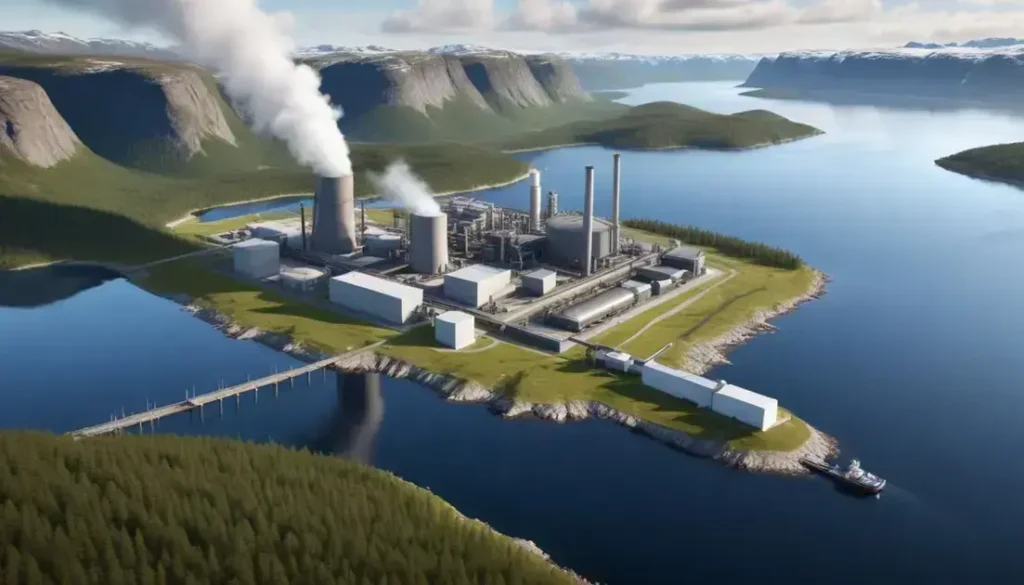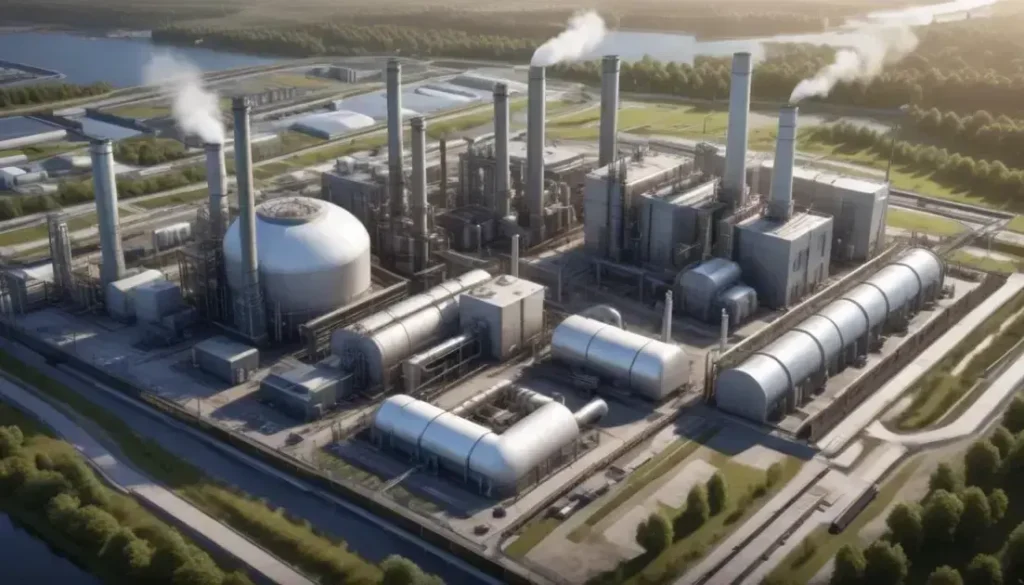Offshore wind energy offers significant benefits, including job creation, reduced carbon emissions, and enhanced energy security, particularly through transatlantic partnerships that foster technological innovation and investment in sustainable practices.
The recent commitment of £400 million by The Crown Estate in offshore wind investments signifies a remarkable turning point for renewable energy initiatives in the UK. Have you considered the implications for American businesses?
Investment Overview
The UK is witnessing a significant shift in its energy landscape, driven by a robust commitment to offshore wind investments. With an eye towards clean and sustainable energy solutions, The Crown Estate has allocated £400 million to enhance offshore wind infrastructure.
This substantial investment aims to bolster the UK’s position as a leader in renewable energy technology. By improving the operational efficiencies of existing wind farms and developing new projects, this funding will not only diversify the energy mix but also secure energy supplies for years to come.
Furthermore, this initiative opens new opportunities for collaboration with US businesses and firms interested in renewable technologies. The UK’s offshore wind sector is ripe for innovation, making it an attractive market for American companies aiming to expand their footprint internationally.
Infrastructure improvement is crucial, as it lays the groundwork for future growth and investment. This includes not just the physical infrastructure of wind farms, but also the complementary technologies and logistics necessary to support large-scale offshore operations.
Crown Estate’s Strategic Goals
The Crown Estate has set ambitious strategic goals to steer the UK towards a future powered by renewable energy. Central to these goals is the commitment to significantly increase the capacity of offshore wind generation. This aligns with the UK’s broader environmental targets and showcases a commitment to sustainability.
One of the primary objectives is to enhance energy security for the nation. By investing in offshore wind infrastructure, The Crown Estate aims to reduce dependency on fossil fuels and promote a stable, clean energy supply. This shift not only bolsters energy independence but also generates economic opportunities.
The Crown Estate also emphasizes innovation in its strategic framework. By facilitating partnerships with technology developers and industry leaders, they seek to implement cutting-edge solutions that improve efficiency and reduce costs in offshore wind operations. This focus on innovation aligns with global trends in renewable energy.
Furthermore, fostering sustainable economic growth is a key aspect of their strategy. Investments made today are expected to create numerous jobs in the renewable sector, from manufacturing to installation and maintenance of wind farms. Such growth potential makes the offshore wind market an attractive opportunity for investors and stakeholders alike.
Impact on UK Supply Chain
The development of offshore wind projects by The Crown Estate is set to significantly alter the UK supply chain dynamics. As these projects expand, they require a robust and efficient support system, leading to increased demand for various materials and services.
One crucial aspect of this transformation is the local sourcing of components. By prioritizing local suppliers, the offshore wind sector can reduce transportation costs and improve sustainability. This strategy not only supports UK manufacturers but also strengthens the overall economy by creating new jobs.
Moreover, the need for specialized equipment and services is anticipated to rise. Companies involved in fabrication, installation, and maintenance of wind turbines will see expanded opportunities. This growth will be beneficial for both established firms and new entrants specializing in renewable energy technologies.
Investment in infrastructure projects, such as ports and transport links, is essential to facilitate the movement of large components used in offshore wind farms. Enhanced connectivity will contribute to a more functional and resilient supply chain.
As the UK aims to lead in renewable energy, fostering innovation within the supply chain becomes imperative. Collaborations between technology providers and traditional industries can pave the way for cutting-edge solutions and efficiency improvements, ensuring that the supply chain efficiently meets future demands.
The Importance of Infrastructure Development
The success of offshore wind projects heavily relies on the importance of infrastructure development. Effective infrastructure is the backbone of the entire supply chain, enabling the smooth operation of wind farms and ensuring efficient energy production.
Investment in transportation networks is crucial. Ports must be equipped to handle the large components of wind turbines, including blades and nacelles. Enhanced road and rail connections will facilitate the movement of these massive parts from manufacturing sites to assembly locations at sea.
Additionally, building supporting facilities, such as maintenance and repair centers, is essential. These facilities will provide critical services that ensure wind turbines operate at peak efficiency throughout their lifespan. Regular maintenance helps in minimizing downtime and maximizing energy output.
The development of electrical infrastructure also plays a significant role. Upgrading grids to accommodate the fluctuating power generated by offshore wind farms is vital for stable energy distribution. This will help integrate renewable energy more effectively into the national grid.
Moreover, fostering collaboration between government, industry, and technology providers will drive innovative solutions in infrastructure design and implementation. As the offshore wind sector grows, such partnerships will be key to overcoming challenges and maximizing the potential of renewable energy.
Collaborations with American Companies
Collaborations with American companies are becoming increasingly vital for the success of offshore wind projects in the UK. These partnerships leverage shared expertise, resources, and innovation, facilitating rapid advancements in renewable energy technology.
American firms bring cutting-edge technologies and methodologies, enhancing the overall efficiency of UK wind farms. Their experience in large-scale projects can significantly contribute to the planning and execution phases, ensuring timely delivery and cost management.
Additionally, joint ventures between UK and US companies foster knowledge exchange that benefits both parties. By collaborating on research and development, these companies can develop more efficient turbines, improve energy storage solutions, and create more resilient systems to withstand harsh marine environments.
Moreover, such collaborations help stimulate economic growth. By engaging US manufacturers and service providers, the UK can create jobs and boost local supply chains. This not only supports the transition to greener energy but also strengthens transatlantic ties.
Furthermore, partnering with American companies may open additional funding opportunities. Access to a broader investment pool increases the viability of ambitious offshore projects, accelerating the shift towards sustainable energy production in the UK.
UK’s Leadership in Offshore Wind Technology
The UK’s leadership in offshore wind technology is evident through its ambitious projects and innovative approaches. As one of the foremost pioneers in renewable energy, the UK has established itself as a global leader in harnessing wind power capacity.
With numerous operational wind farms and a significant pipeline of planned developments, the UK continues to expand its generation capacity. The nation’s commitment to transitioning towards greener energy not only aids in reducing carbon emissions but also showcases a strong commitment to technological advancements.
Investment in research and development plays a crucial role in sustaining this leadership. High-profile collaborations between private firms, academic institutions, and government bodies are driving innovations in turbine design, energy efficiency, and environmental impact assessments. These advancements enhance the resilience of offshore wind technology and reduce costs.
The UK’s regulatory framework also supports pioneering technologies, making it attractive for investments. Clear policies that promote offshore wind initiatives create a stable environment for businesses to innovate and thrive.
Moreover, the international ramifications of the UK’s expertise in offshore wind cannot be understated. The nation not only serves as a model for other countries but also exports its knowledge, helping to deploy renewable energy solutions globally.
Economic Benefits for Local Communities
The expansion of offshore wind projects brings significant economic benefits to local communities. As these initiatives develop, they create numerous job opportunities that span various sectors, including manufacturing, maintenance, and administration. This influx of jobs stimulates local economies and provides a boost to employment rates.
Local businesses also stand to gain from the support and supply needs of offshore wind farms. Construction, logistics, and service companies are likely to benefit as they partner with larger energy firms, leading to increased revenue and growth.
Additionally, communities hosting these projects often receive funding for public services and infrastructure improvements. This funding can enhance local facilities such as schools, hospitals, and transportation networks, resulting in a higher quality of life for residents.
Moreover, tax revenues generated from offshore wind operations can further support local governments. These funds can be allocated to essential services, ensuring that the economic impact of renewable energy projects is felt broadly across the community.
Furthermore, as communities embrace the shift to green energy, a culture of sustainability and innovation is fostered. Residents become more engaged in environmental initiatives, leading to a stronger communal identity and pride in local achievements.
Sustainable Development Principles
The integration of sustainable development principles into offshore wind projects is essential for ensuring long-term environmental, social, and economic benefits. These principles focus on meeting the present needs without compromising the ability of future generations to meet theirs.
One of the key aspects of sustainability is minimizing the ecological footprint of wind farms. This involves conducting thorough environmental assessments to understand potential impacts on marine ecosystems and local wildlife. Implementing mitigation strategies during construction and operation phases helps in reducing adverse effects.
Additionally, community engagement plays a vital role in sustainable development. Involving local stakeholders in the planning process fosters transparency and builds trust. It ensures that the interests and concerns of communities are taken into account, making projects more acceptable and beneficial for all.
Moreover, adopting a circular economy approach within the industry promotes the recycling and reuse of materials. This not only reduces waste but also enhances resource efficiency, leading to cost savings and reduced environmental impact.
Lastly, integrating renewable energy sources like offshore wind into local and national energy systems contributes significantly to climate change mitigation. Transitioning to cleaner energy sources is critical for achieving global sustainability goals and ensuring a resilient future.
Insights from Industry Leaders
Insights from industry leaders in offshore wind technology provide valuable perspectives on the future of renewable energy. These experts emphasize the importance of innovation and investment in research as keys to unlocking the full potential of offshore wind.
Many leaders highlight that collaboration among stakeholders is crucial. Partnerships between government agencies, private companies, and research institutions foster a more dynamic environment for developing cutting-edge technologies. By pooling resources and expertise, these collaborations accelerate advancements in turbine efficiency and energy storage solutions.
Additionally, the leaders stress the need for a supportive regulatory framework. Clear policies and incentives can drive investment and help streamline project approvals, making it easier to bring new offshore wind projects to fruition.
Moreover, addressing challenges such as supply chain disruptions and workforce development remains a priority. Industry leaders advocate for training programs that equip workers with the necessary skills to thrive in the green energy sector, ensuring a sustainable labor market for future projects.
Finally, many industry experts emphasize the environmental benefits of offshore wind. Transitioning to renewable energy sources not only helps combat climate change but also promotes energy independence and security. The insights provided by these leaders shape a positive outlook for the ongoing transition to a sustainable energy future.
Funding Programs and Investments
Funding programs and investments are critical to the success of offshore wind projects. These financial resources enable companies to develop and implement innovative technologies, ensuring the efficient construction and operation of wind farms.
Government incentives play a significant role in attracting investments to the sector. Schemes such as grants, tax credits, and low-interest loans help offset initial costs. This financial support encourages both local and international companies to invest in renewable energy initiatives.
Additionally, private sector investments are vital. Venture capital firms and private equity investors are increasingly targeting the green energy market. They recognize the potential returns associated with offshore wind projects and are willing to invest in startups and established companies focusing on renewable technologies.
Public-private partnerships also bring together resources and expertise. These collaborations leverage public funds with private capital, enhancing the potential for larger-scale projects. By pooling resources, partners can tackle the financial barriers that often hinder offshore wind development.
Furthermore, innovative funding models, such as green bonds, are gaining traction. These financial instruments allow investors to support projects that have a positive environmental impact, promoting sustainable development and attracting environmentally-conscious investors.
Future Challenges and Directions
The offshore wind industry faces several future challenges that will shape its development and trajectory. One of the primary concerns is the need for technological advancements to improve efficiency and reduce costs. As the sector matures, continuous innovation in turbine design, energy storage, and grid integration is vital to enhance overall performance.
Another significant challenge is maintaining a resilient supply chain. The industry must address supply chain disruptions that can impede project timelines and escalate costs. Developing robust partnerships with local suppliers and diversifying sources of materials will help mitigate these risks.
Additionally, the industry must navigate complex regulatory environments. Ensuring compliance with local and international regulations while pushing for streamlined permitting processes is critical for project success. Active engagement with policymakers will help create a more favorable regulatory landscape.
Furthermore, public acceptance is essential for the growth of offshore wind. Addressing community concerns about environmental impacts, visual aesthetics, and local benefits can foster greater support for wind projects. Effective communication and transparent stakeholder engagement are keys to building trust.
Finally, the industry is challenged to align with global climate goals. As nations strive to meet ambitious targets, the offshore wind sector must scale up rapidly while ensuring sustainability and environmental stewardship.
Conclusions on Transatlantic Opportunities
The transatlantic partnership presents significant opportunities for both the UK and US in the realm of offshore wind energy. By collaborating on technology transfer, both nations stand to benefit from shared knowledge and innovations that can drive down costs and enhance efficiency.
Investment flows between the two countries can facilitate large-scale projects that create jobs and stimulate economic growth. As companies look to expand their operations internationally, establishing connections across the Atlantic can unlock new markets and investment opportunities.
Moreover, joint research initiatives between UK and US universities and research institutions can foster innovation in renewable energy technologies. Sharing best practices and collaborating on projects of mutual interest will help advance the goals of both countries in reducing carbon emissions.
Additionally, a harmonized regulatory framework could ease the flow of investments and projects across borders. By aligning standards and simplifying regulations, both nations can encourage greater participation from firms looking to invest in offshore wind projects.
Overall, the path forward is promising. As challenges are addressed through collaboration, the potential for a more resilient and sustainable energy future emerges. Emphasizing cooperation in offshore wind development will not only contribute to energy security but also affirm a commitment to combating climate change on a global scale.
In Summary: Embracing the Future of Offshore Wind
The growth of the offshore wind industry brings exciting opportunities for both the UK and the US. By working together, these countries can lead in renewable energy technologies, create jobs, and stimulate economic growth.
Partnerships between businesses, governments, and research institutions are essential for driving innovation and ensuring that projects are successful. As we face future challenges, cooperation on both sides of the Atlantic will be key to achieving energy goals and reducing carbon emissions.
Investing in sustainable practices and engaging local communities will enhance the impact of these initiatives. With a collective effort, we can pave the way for a greener and more sustainable future.
Now is the time to embrace the possibilities that offshore wind can offer and to work together for a cleaner planet.
Frequently Asked Questions
What are the main benefits of offshore wind energy?
Offshore wind energy provides a renewable power source that can reduce carbon emissions, create jobs, and enhance energy security.
How do government incentives support offshore wind projects?
Government incentives provide financial assistance, such as tax credits and grants, which help offset costs and encourage investment in renewable energy.
What role does technology play in the growth of offshore wind?
Technology drives advancements in turbine efficiency, energy storage, and grid integration, making offshore wind more competitive and sustainable.
How can local communities engage with offshore wind projects?
Local communities can engage through public consultations, partnerships with developers, and by voicing concerns to ensure projects benefit their regions.
What are the challenges facing the offshore wind industry?
Challenges include supply chain disruptions, regulatory hurdles, and the need for continued technological innovation and public acceptance.
How do US and UK partnerships enhance offshore wind development?
Partnerships between the US and UK facilitate knowledge sharing, investment flows, and collaborative research, accelerating advancements in offshore wind technologies.


